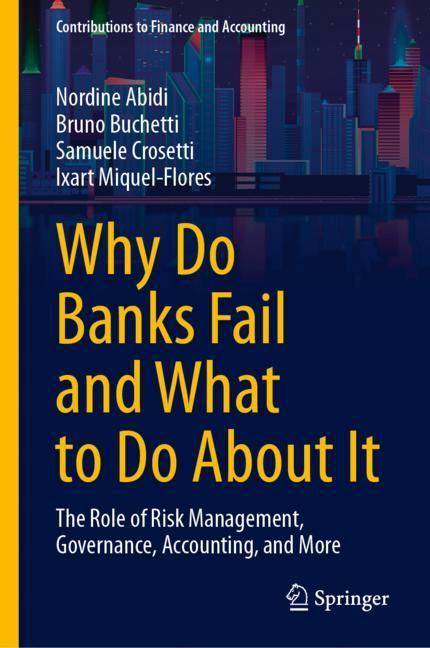
- Retrait gratuit dans votre magasin Club
- 7.000.000 titres dans notre catalogue
- Payer en toute sécurité
- Toujours un magasin près de chez vous
- Retrait gratuit dans votre magasin Club
- 7.000.0000 titres dans notre catalogue
- Payer en toute sécurité
- Toujours un magasin près de chez vous
Why Do Banks Fail and What to Do about It
The Role of Risk Management, Governance, Accounting, and More
Nordine Abidi, Bruno Buchetti, Samuele Crosetti, Ixart Miquel-FloresDescription
Banks play a crucial role in the global economy, yet they are vulnerable to failures that can have catastrophic effects. Key questions arise: What causes bank failures? What drives these failures? Can we avoid a banking crisis? What happens when a bank fails?
This book explores the causes, consequences, and potential prevention of banking crises. It begins by examining the fundamental roles of banks in the economic system, focusing on their intermediary functions like liquidity provision, payment management, asset transformation, and borrower oversight. The book then delves into the challenges facing the banking sector, including cyber threats, climate change, and geopolitical instabilities.
The second chapter addresses the primary risks banks face, such as liquidity, credit, market, interest rate, IT, and environmental risks, and how these contribute to banking failures. Chapter three shifts focus to financial statements, contrasting those of commercial and investment banks with non-financial companies, and discusses the impact of creative accounting in recent banking collapses.
Governance issues and their role in banking failures are the focus of chapter four, highlighting the crucial need for effective risk monitoring by bank directors. The final chapter illustrates the process of bank resolution and the evolving strategies of resolution authorities in ensuring bank stability.
Targeted at researchers, regulators, and practitioners, this book comprehensively covers the drivers of banking failures, regulatory improvement suggestions, and real-world case studies. It emphasizes the importance of banks in today's economy, their unique risks, and the aftermath of their failure, aiming to provide a threefold contribution to understanding and managing banking crises.
Spécifications
Parties prenantes
- Auteur(s) :
- Editeur:
Contenu
- Nombre de pages :
- 180
- Langue:
- Anglais
- Collection :
Caractéristiques
- EAN:
- 9783031523106
- Date de parution :
- 22-03-24
- Format:
- Livre relié
- Format numérique:
- Genaaid
- Dimensions :
- 156 mm x 234 mm
- Poids :
- 453 g

Les avis
Nous publions uniquement les avis qui respectent les conditions requises. Consultez nos conditions pour les avis.






